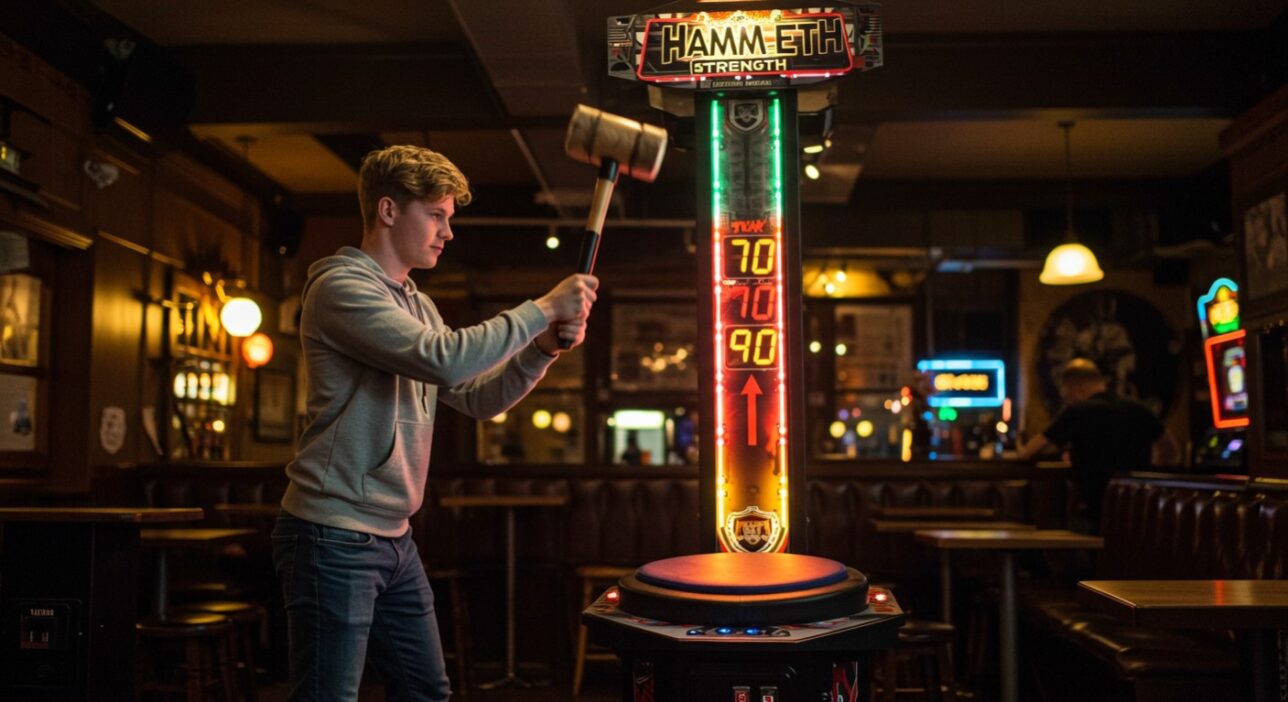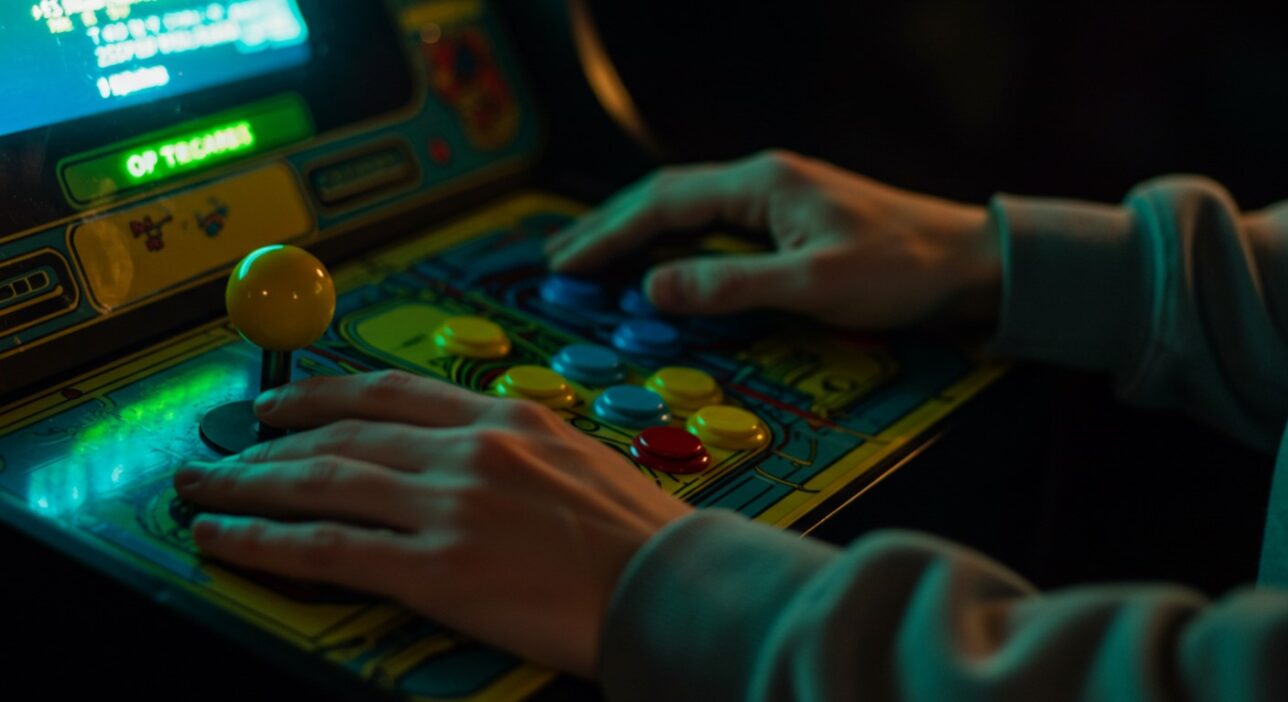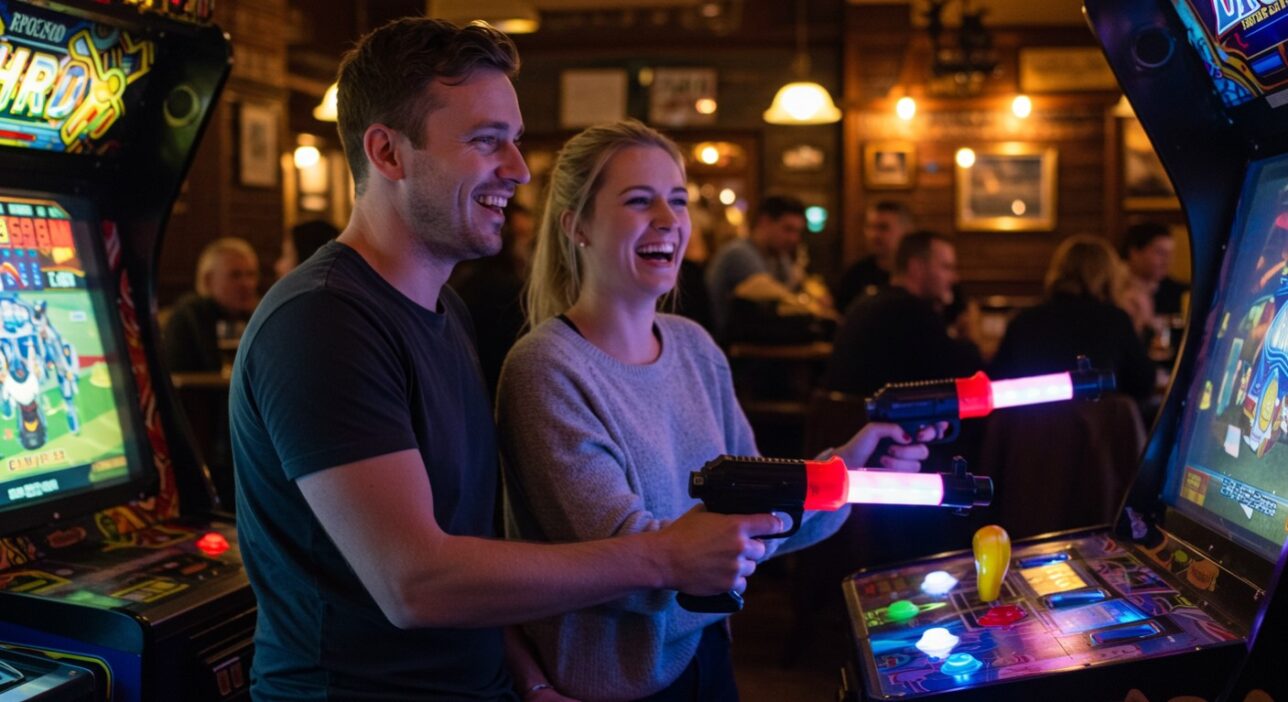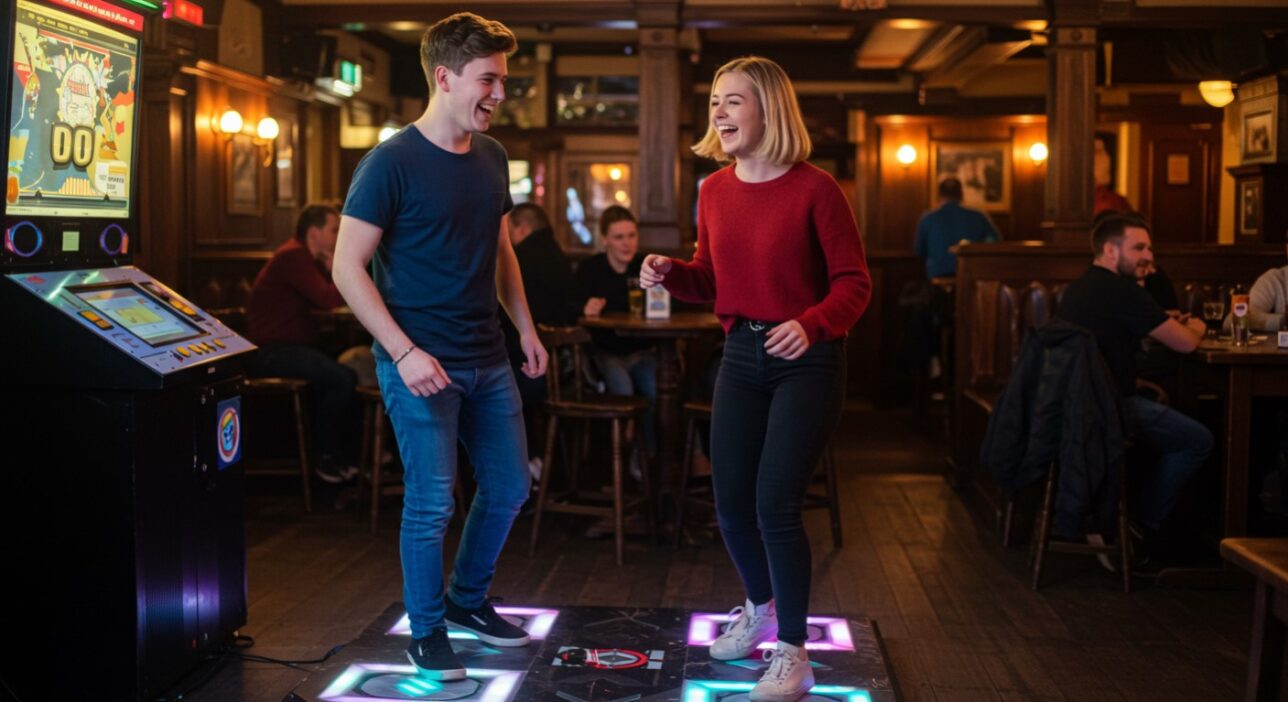
What Types of Arcade Machines Are There?
When most people hear the word arcade, their minds often jump straight to video games: Pac-Man, Street Fighter, or perhaps a light-gun classic like Time Crisis. Yet the truth is that arcades have always been much more varied than that. They are filled with different types of machines, each offering its own style of entertainment. From the mechanical beauty of pinball tables to the bright chaos of penny pushers and the immersive thrill of modern VR cabinets, the world of arcade machines is wide and diverse.
For generations of players in the UK and around the world, arcades have been places of discovery. They offered the newest gaming technology long before home consoles caught up, while also preserving mechanical amusements that pre-dated video screens entirely. The sheer variety of machines is one reason arcades remain appealing today. There is something for everyone: quick-fire shooters, competitive fighters, musical challenges, or simply the chance to win a cuddly toy on the seaside pier.
This guide explores the main types of arcade machines—old and new. It explains their history, what makes each type unique, and where you are most likely to find them today. Whether you are a nostalgic adult revisiting your youth or a newcomer curious about arcade culture, this overview will give you a clear picture of the different machines that make arcades so special.
Classic Video Game Cabinets

Origins and Design
The classic video game cabinet is the image most closely associated with the golden age of arcades. These upright machines first became popular in the late 1970s and early 1980s, when titles such as Space Invaders (1978), Pac-Man (1980), and Donkey Kong (1981) burst onto the scene.
A typical cabinet features a vertical screen, a joystick, and buttons mounted on a control panel. The sides are often decorated with colourful artwork, instantly recognisable from across the room. Players stand to play, with the design encouraging short, intense bursts of activity rather than long sessions.
Appeal
Classic cabinets thrived because they were simple to learn but difficult to master. Anyone could understand how to move Pac-Man or fire at descending aliens, but surviving long enough to reach a high score took practice and skill. This balance made the games addictive and perfect for public play.
Legacy and Modern Presence
Today, classic cabinets are celebrated as cultural icons. Retro arcades across the UK stock reconditioned machines, while modern companies release faithful reproductions for collectors. Many pubs and arcade bars also feature cocktail-table versions—sit-down machines where two players can enjoy head-to-head matches.
The simplicity of these games ensures they remain appealing even decades later. Parents often introduce their children to Pac-Man or Donkey Kong as a way of sharing a piece of gaming history.
Pinball Machines
Mechanical Marvels
Pinball predates video games by decades and remains one of the most enduring forms of arcade entertainment. A pinball machine consists of a glass-covered table with flippers, bumpers, ramps, and targets. Players launch a metal ball into play and use the flippers to keep it in motion, aiming to score points by hitting various features.
Skill and Sensation
Unlike video games, pinball relies heavily on physics and skill. Each table has its own layout, requiring players to learn angles, timing, and ball control. The flashing lights, buzzing solenoids, and distinctive clack of the flippers create a sensory experience that is both mechanical and immersive.
Collector Culture
Pinball has a devoted global following. Collectors seek out machines from manufacturers such as Bally, Williams, and Stern, often restoring them to pristine condition. Enthusiasts form leagues and competitions, treating pinball as both a hobby and a competitive sport.
UK Context
In the UK, pinball machines can still be found in some seaside arcades, though they are increasingly common in specialist bars and retro venues. London and Manchester, for example, host pinball clubs where enthusiasts gather to play on machines ranging from vintage classics to brand-new licensed tables based on films and TV shows.
Fighting and Competitive Game Cabinets

Birth of a Genre
The 1990s saw the rise of fighting games, and with them a new style of arcade cabinet designed for two-player head-to-head battles. Titles like Street Fighter II (1991), Mortal Kombat (1992), and later Tekken (1994) turned arcades into arenas of competitive skill.
Social and Competitive Appeal
Fighting cabinets are built with two sets of controls—one for each player—allowing direct competition. Spectators often gather to watch intense matches, cheering or jeering as the tide of battle shifts. Winning against a stranger in a public arcade carried a sense of pride that home gaming could not match.
Enduring Legacy
Even today, fighting games retain a strong following. Competitive scenes exist around titles such as Street Fighter V and Tekken 7, with tournaments held in arcades and gaming centres. In the UK, modern arcade bars frequently feature retro fighting cabinets, often drawing crowds eager to test their skills.
Driving and Racing Simulators
Immersive Hardware
Driving and racing games have always been among the most spectacular arcade games. These cabinets go far beyond screens and joysticks, featuring full-sized steering wheels, pedals, and bucket seats. Many link multiple machines together, allowing groups to race each other.
Classic Titles
Games such as Out Run (1986), Daytona USA (1994), and Mario Kart Arcade GP (2005) have thrilled generations of players. With giant screens, surround sound, and realistic controls, they create a sense of speed and excitement unmatched by home consoles—at least until very recently.
UK Presence
Racing simulators are staples of British family entertainment centres and seaside arcades. They appeal to all ages, from children taking their first digital drive to adults reliving the joy of arcade competition. Modern versions even include motion platforms, tilting seats, and force feedback for extra immersion.
Light Gun and Shooting Games

The Innovation of Light Guns
Light gun shooters became popular in the late 1980s and 1990s. Players use a plastic gun or rifle to aim directly at the screen, firing at enemies or targets. Games such as Duck Hunt on home consoles laid the foundation, but arcades elevated the concept with precision hardware and immersive setups.
Popular Examples
Time Crisis (1995) introduced the use of a foot pedal to duck behind cover, adding tactical depth. House of the Dead (1996) offered horror-themed action, complete with grotesque zombie enemies. These games often featured large cabinets and multiple players, turning shooting into a shared spectacle.
Why They Still Work
The physicality of holding a gun-shaped controller and aiming at real targets makes these games highly engaging. They demand reflexes, accuracy, and fast reactions, creating a sense of adrenaline that home versions rarely capture.
UK Context
Light gun games remain common in UK arcades, particularly in bowling alleys and entertainment centres. They are often among the most popular machines in venues because they provide instant thrills and intuitive gameplay for beginners.
Dance and Rhythm Games
A New Kind of Play
The late 1990s introduced rhythm-based arcade machines, where gameplay involved matching movements to music. Dance Dance Revolution (1998) pioneered the genre, featuring a floor pad with arrows that players stepped on in time with the beat.
Variety of Setups
Other rhythm games expanded the formula. Guitar Hero Arcade used plastic guitars with buttons and strum bars, while Taiko Drum Master offered giant drum kits. Some machines even featured microphones or full band setups, turning arcades into stages for musical performance.
Social and Energetic Appeal
These machines are not only games but performances. Crowds often gather to watch skilled players execute complex dance routines or musical feats. The combination of physical movement, music, and social energy makes rhythm games a highlight of many arcades.
Popularity in the UK
While not as dominant as in Japan, rhythm games have carved out a presence in the UK. Many modern arcades and gaming bars feature at least one dance machine, often attracting both casual players and dedicated enthusiasts.
Redemption and Prize Machines

Combining Play with Rewards
Redemption machines dispense tickets or tokens that can be exchanged for prizes. They range from skill-based games such as skee-ball and basketball hoops to luck-driven machines like coin pushers and claw cranes.
Seaside Staples
In the UK, redemption machines are the lifeblood of seaside arcades. Rows of penny pushers, brightly lit with flashing lights, tempt players to drop coins in hopes of pushing prizes over the edge. Claw machines dangle cuddly toys just out of reach, fuelling both frustration and excitement.
Appeal Across Ages
The promise of a tangible prize appeals to children and adults alike. Even if the prizes are inexpensive, the thrill of winning something physical adds a unique dimension to arcade play. Family entertainment centres rely heavily on redemption games for this reason.
Modern Immersive Arcade Machines
Virtual Reality Experiences
The newest generation of arcade machines incorporates virtual reality. VR arcades use headsets, motion controllers, and room-scale tracking to place players inside digital worlds. These experiences often go beyond what is possible at home, offering multiplayer arenas and specialised hardware.
Deluxe Motion Cabinets
Modern arcades also feature large deluxe machines with motion platforms. Examples include flight simulators, roller-coaster rides, and racing games where the entire seat tilts and shakes to mimic movement.
Blending Old and New
Some venues combine VR with classic arcade elements. For example, VR shooters may use gun-shaped controllers similar to light-gun games, creating continuity between past and present.
UK Availability
VR arcades are growing in popularity across UK cities, particularly London. Family centres are also beginning to add immersive experiences, blending traditional redemption games with cutting-edge attractions.
Different Types of Arcade Machines: A World of Machines to Explore

Arcades have always thrived on variety. From the earliest pinball tables to today’s VR simulators, they offer a mix of experiences that no single platform can match. Classic video game cabinets deliver simplicity and nostalgia. Pinball machines showcase mechanical artistry. Fighting games, racing simulators, and light-gun shooters provide competitive thrills. Rhythm games turn play into performance, while redemption machines keep families entertained with prizes.
In the UK, this variety ensures arcades remain relevant. Seaside halls continue to echo with the sound of coins and claw machines, while modern bars and VR venues draw new crowds into the fold.
The enduring popularity of arcades lies in this diversity. Whatever your taste—retro, mechanical, competitive, or immersive—there is an arcade machine waiting for you. And that is why, even in an era dominated by consoles and mobile devices, arcades remain alive and full of energy.


